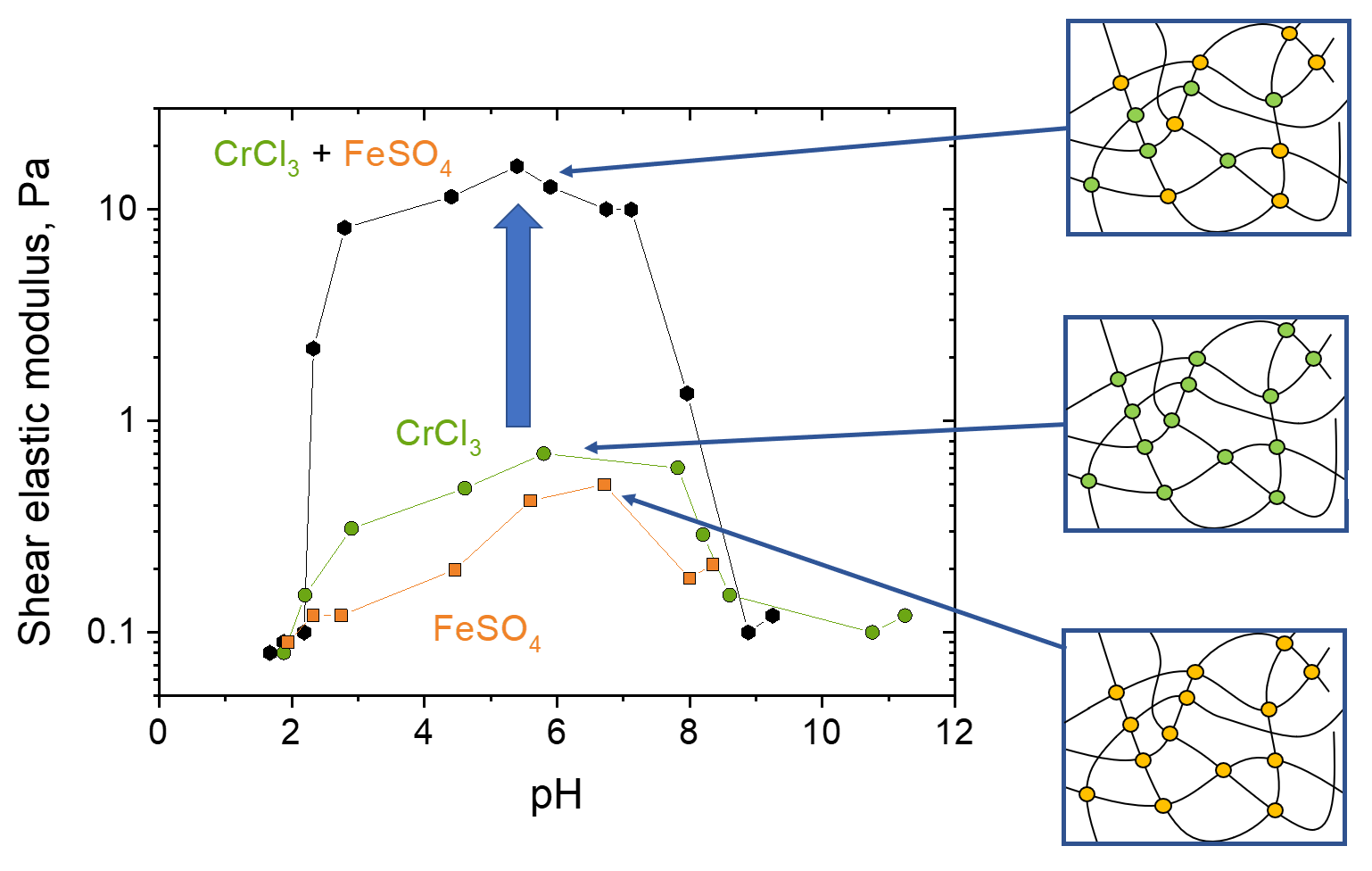Natural Polyelectrolyte Hydrogels with Two Types of Cross-Links with Different Energy
DOI:
https://doi.org/10.31489/2959-0663/2-24-12Keywords:
polymer gel, polysaccharide, xanthan, polymer network, polyelectrolyte, cross-linking, viscoelasticity, rheological propertiesAbstract
For the first time, gels of a polymer cross-linked by two types of ionic cross-links of different energies, namely trivalent chromium (III) ions and divalent iron (II) ions, were prepared. The negatively charged polysaccharide xanthan, a polyelectrolyte of natural origin, was used as a polymer. A study of xanthan gels cross-linked with each cross-linker separately was carried out to identify the optimal concentrations of each cross-linker for the production of a double cross-linked gel. The mechanical properties of hydrogels under oscillatory shear deformations were then studied. It was demonstrated that the simultaneous use of two cross-linkers resulted in a synergistic increase in the elastic modulus (plateau storage modulus) compared to gels cross-linked with each cross-linker separately. For a gel with two types of cross-links, the elastic modulus was 16 Pa. In contrast, for gels cross-linked with either chromium (III) cations or iron (II) cations, the elastic modulus was approximately 0.6 and 0.5 Pa, respectively. The strong effect can be attributed to the different nature of cross-linking between xanthan macromolecules and chromium (III) and iron (II) cations, as well as the different strength of the cross-links formed. The optimal range of pH values was determined in which a synergistic increase in the elastic modulus of gels with two types of cross-links was observed compared to the corresponding gels cross-linked with each cross-linker separately. Consequently, the concurrent utilisation of two cross-linking agents that generate cross-links with disparate energy levels represents an efficacious strategy to improve the tensile strength of polymer hydrogels.

Downloads
Published
How to Cite
Issue
Section
License
Copyright (c) 2024 Dmitry A. Muravlev, Anton P. Doroganov, Olga E. Philippova, Andrey V. Shibaev

This work is licensed under a Creative Commons Attribution-NonCommercial-NoDerivatives 4.0 International License.
This work is licensed under a Creative Commons Attribution-NonCommercial-NoDerivatives 4.0 International License.
Authors retain copyright and grant the journal right of first publication with the work simultaneously licensed under a Creative Commons Attribution License (CC BY-NC-ND 4.0) that allows others to share the work with an acknowledgement of the work's authorship and initial publication in this journal.



